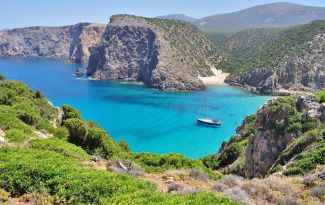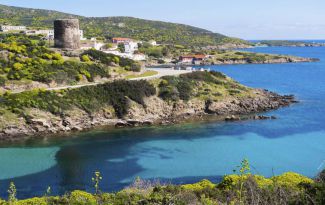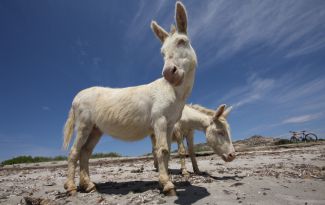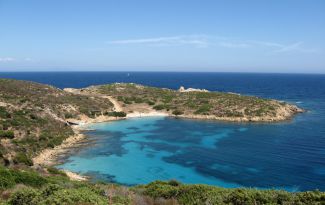High coastlines and unspoiled nature
Porto Torres
Located on a plain sloping towards the Gulf of Asinara, it is one of the main centers in Northern Sardinia. Human presence in the city's territory dates back to prehistoric times, as evidenced by some prehistoric villages and the many Nuraghi (ancient megalithic edifices) and burial grounds in the area.
Located on a plain sloping towards the Gulf of Asinara, it is one of the main centers in Northern Sardinia. Human presence in the city's territory dates back to prehistoric times, as evidenced by some prehistoric villages and the many Nuraghi (ancient megalithic edifices) and burial grounds in the area.
Within the territory of Porto Torres, there are archaeological complexes like the "Terme Centrali" (Central Baths), also known as the "Palazzo di Re Barbaro." Near the archaeological site, you can find the "Antiquarium Turritano" museum, which exhibits original ceramic artifacts, marble statues, and mosaics discovered during excavations on the adjacent Colonia Iulia Turris Libisonis site.
You can also visit the Terme Maetzke, named after the archaeologist who managed the excavations between 1958 and 1961, the Roman bridge, and the small church of San Gavino a Mare.
Porto Torres has an important port that provides connections to Genoa, Marseille, and Spain.
Porto Torres has an important port that provides connections to Genoa, Marseille, and Spain.
Asinara is a National Park and an island belonging to the municipality of Porto Torres. It has an area of approximately 51 square kilometers and is the fifth-largest Italian island (excluding Sicily and Sardinia) and the third-largest in Sardinia.
Moreover, it has largely remained preserved thanks to historical events that led to its isolation. Humans were present on the island during the Neolithic and medieval periods but settled there permanently only since the 1600s, with a community of shepherds and fishermen. The latter were removed in 1885 when the main prison of the Kingdom of Italy was established, which was added to the penal colony.
During World War II, the island served as a prison camp for Austro-Hungarian soldiers, and from the 1970s until the establishment of the National Park in 1997, it was home to one of Italy's major high-security prisons.
Significant evidence of these events remains: the coastal town of Cala d'Oliva with its low white buildings; the Cala Reale site with the old hospital, which also served as an occasional residence for the royal Savoy family; the Fornelli area, highlighting the former maximum-security prison with cells arranged along the long corridors.
The island is mountainous, with high and rugged coastlines interspersed with beaches and coves. There are few trees due to the island's arid climate. The island's name is derived from the word "asino" (donkey) because you can encounter rare, wild albino donkeys here.







